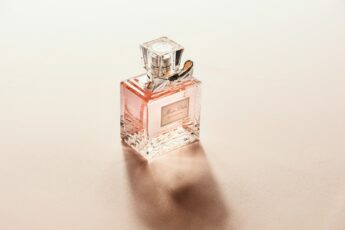Introduction: Young Looking Skin – The Quest for Timeless Beauty
The pursuit of young-looking skin has captivated humanity for centuries. As a beauty industry expert, I’ve witnessed firsthand how this quest shapes trends, drives innovation, and influences personal care routines worldwide.
Young-looking skin represents more than mere aesthetics; it often symbolizes vitality, health, and well-being. The desire to maintain a youthful appearance has spawned a multi-billion dollar industry offering an array of products, treatments, and technologies.
Key aspects of achieving young-looking skin include:
- Understanding the aging process
- Developing effective skincare routines
- Utilizing powerful anti-aging ingredients
- Exploring advanced treatments and procedures
- Adopting skin-friendly lifestyle habits
Beauty is about enhancing what you have. Let yourself shine through.
This quote encapsulates the essence of the young-looking skin journey. It’s not about completely altering one’s appearance but rather nurturing and enhancing natural beauty.
The concept of youthful skin varies across cultures and evolves. However, some universal characteristics include:
| Characteristic | Description |
|---|---|
| Firmness | Skin that appears plump and elastic |
| Even tone | Uniform color without excessive pigmentation |
| Smooth texture | Minimal fine lines and wrinkles |
| Radiance | A healthy, natural glow |
As we delve deeper into the world of young-looking skin, we’ll explore cutting-edge research, time-tested remedies, and emerging technologies. From the molecular level to holistic approaches, the field of skincare continues to evolve rapidly.
Remember, while the pursuit of youthful skin can be rewarding, it’s equally important to embrace the natural aging process. True beauty transcends age and radiates from within. In the following chapters, we’ll navigate the complex landscape of skincare, empowering you with knowledge to make informed decisions about your skin health.
Understanding Skin Aging
To effectively pursue young-looking skin, we must first understand how skin ages. Skin aging involves complex processes influenced by both internal and external factors.
Intrinsic aging occurs naturally over time, driven by genetic and hormonal changes. Extrinsic aging, on the other hand, results from environmental factors and lifestyle choices.
Key factors contributing to skin aging:
- Sun exposure (photoaging)
- Pollution
- Smoking
- Poor diet
- Lack of sleep
- Stress
Time is a dressmaker specializing in alterations.
This quote reminds us that change is inevitable, but we can influence how our skin ages through our choices and habits.
At the cellular level, aging skin experiences:
| Process | Effect on Skin |
|---|---|
| Decreased collagen production | Loss of firmness and elasticity |
| Reduced cell turnover | Dull, rough texture |
| Impaired barrier function | Increased dryness and sensitivity |
| Uneven melanin distribution | Age spots and hyperpigmentation |
Understanding these processes helps us more effectively target specific aspects of skin aging. For example, knowing that collagen production decreases with age, we can focus on ingredients and treatments that stimulate collagen synthesis.
Visible signs of aging skin typically include:
- Fine lines and wrinkles
- Loss of volume and sagging
- Uneven skin tone
- Dryness and roughness
- Enlarged pores
By recognizing these signs early, we can take proactive steps to maintain youthful-looking skin. Remember, prevention is often easier than correction when it comes to skin aging.
Essential Skincare Routine for Youthful Appearance
A consistent, well-designed skincare routine forms the foundation for maintaining young looking skin. While individual needs may vary, certain steps are crucial for everyone.
Key components of an effective anti-aging skincare routine:
- Cleansing: Removes dirt, oil, and pollutants
- Exfoliation: Promotes cell turnover
- Hydration: Maintains skin’s moisture balance
- Protection: Shields skin from UV damage
- Repair: Supports skin’s natural regeneration process
Invest in your skin. It is going to represent you for a very long time.
This quote underscores the importance of consistent skincare as a long-term investment in your appearance and health.
Let’s break down each step:
Cleansing: Use a gentle, pH-balanced cleanser twice daily. Avoid harsh soaps that can strip the skin’s natural oils.
Exfoliation: Incorporate chemical exfoliants like AHAs or BHAs 1-3 times a week, depending on skin sensitivity. Physical scrubs can be used occasionally, but be gentle to avoid micro-tears in the skin.
Hydration: Apply a moisturizer suitable for your skin type daily. Look for ingredients like hyaluronic acid, glycerin, or ceramides.
Protection: Sunscreen is non-negotiable. Use a broad-spectrum SPF 30 or higher every day, even when indoors.
Repair: Night is the best time for skin repair. Use targeted treatments like retinoids or peptides before bed.
Sample anti-aging skincare routine:
| Morning | Evening |
|---|---|
| Gentle cleanser | Double cleanse (oil-based followed by water-based cleanser) |
| Antioxidant serum | Exfoliate (1-3 times a week) |
| Moisturizer | Treatment serum (e.g., retinoid) |
| Sunscreen | Rich moisturizer or night cream |
Remember, consistency is key. Results take time, so stick to your routine for at least 6-8 weeks before expecting visible changes. Always patch-test new products and introduce them gradually to minimize the risk of irritation.

Powerful Ingredients for Young-Looking Skin
The quest for youthful skin has led to the discovery of several potent ingredients. These anti-aging powerhouses work at the cellular level to combat signs of aging and promote a more youthful appearance.
Key ingredients for maintaining young-looking skin:
- Retinoids: Vitamin A derivatives that boost collagen production and cell turnover
- Antioxidants: Protect skin from free radical damage
- Peptides: Signal skin to produce more collagen
- Hyaluronic Acid: Hydrates and plumps the skin
- Ceramides: Strengthen the skin barrier
Beauty is an inside job.
This quote reminds us that while topical ingredients are important, overall health and well-being also play crucial roles in skin appearance.
Let’s explore these ingredients in more detail:
| Ingredient | Benefits | Best For |
|---|---|---|
| Retinoids | Reduce fine lines, even skin tone | Nighttime use |
| Vitamin C | Brightens, boosts collagen | Morning use |
| Peptides | Firm skin, reduce wrinkles | Any time |
| Hyaluronic Acid | Hydrate, plump skin | Any time |
| Niacinamide | Improve skin texture, reduce pores | Any time |
When incorporating these ingredients into your routine, start slowly. Some, like retinoids, can cause initial irritation. Always patch-test new products and introduce them gradually.
Remember, the most effective ingredient is the one you use consistently. A simple routine with a few well-chosen ingredients often yields better results than a complex regimen with many products.
Advanced Treatments and Procedures
While a good skincare routine forms the foundation, advanced treatments can provide more dramatic results in the pursuit of young-looking skin. These procedures, often performed by professionals, can address specific concerns and offer more intensive anti-aging benefits.
Popular advanced treatments include:
- Chemical peels
- Microdermabrasion
- Laser therapies
- Dermal fillers
- Botox injections
- Microneedling
- Radiofrequency treatments
Aging is a fact of life. Looking your age is not.
This quote encapsulates the philosophy behind many of these treatments: while we can’t stop time, we can influence how it affects our appearance.
Let’s break down some of these treatments:
| Treatment | How It Works | Best For |
|---|---|---|
| Chemical Peels | Exfoliate skin with acids | Fine lines, uneven texture |
| Laser Therapy | Use light energy to rejuvenate skin | Pigmentation, skin tightening |
| Dermal Fillers | Inject substances to add volume | Deep wrinkles, volume loss |
| Microneedling | Create micro-injuries to stimulate collagen | Overall skin rejuvenation |
It’s crucial to have these treatments performed by qualified professionals. While they can offer significant benefits, they also come with potential risks and downtime.
Factors to consider when exploring advanced treatments:
- Your specific skin concerns
- Budget (these treatments can be expensive)
- Potential downtime
- Maintenance required (many treatments need regular sessions)
- Your comfort level with more invasive procedures
Remember, these treatments work best in conjunction with a solid skincare routine and healthy lifestyle habits. They’re not magic solutions but rather tools that can enhance your overall efforts for young-looking skin.
Before deciding on any advanced treatment, consult with a dermatologist or licensed aesthetician. They can help you determine the most suitable options for your unique skin and goals.
Nutrition and Lifestyle Factors
The journey to young-looking skin extends beyond creams and treatments. Nutrition and lifestyle choices play crucial roles in maintaining a youthful appearance. What you put into your body and how you live your life can significantly impact your skin’s health and appearance.
Key lifestyle factors affecting skin health:
- Diet
- Hydration
- Sleep
- Stress management
- Exercise
You are what you eat, and it shows on your face.
This quote highlights the direct connection between nutrition and skin appearance.
Let’s explore how these factors influence skin health:
| Factor | Impact on Skin | Tips |
|---|---|---|
| Diet | Provides nutrients for skin repair | Eat antioxidant-rich foods |
| Hydration | Maintains skin elasticity | Drink 8-10 glasses of water daily |
| Sleep | Allows time for skin regeneration | Aim for 7-9 hours nightly |
| Stress | Can accelerate aging | Practice relaxation techniques |
| Exercise | Improves circulation to the skin | Engage in regular physical activity |
Skin-friendly foods to include in your diet:
- Fatty fish (omega-3s)
- Avocados (healthy fats)
- Berries (antioxidants)
- Leafy greens (vitamins and minerals)
- Nuts and seeds (vitamin E)
Equally important is avoiding factors that can accelerate skin aging, such as:
- Excessive sun exposure
- Smoking
- Excessive alcohol consumption
- High-sugar diets
Remember, consistency is key. Occasional indulgences won’t derail your efforts, but long-term habits have the most significant impact on skin health.

Natural Remedies and DIY Approaches
Advanced skincare products and treatments offer powerful solutions, natural remedies, and DIY approaches that can also contribute to young-looking skin. These methods often leverage ingredients found in nature and can be easily incorporated into your home routine.
Popular natural ingredients for skincare:
- Aloe vera
- Honey
- Green tea
- Coconut oil
- Rosehip oil
Nature itself is the best physician.
This quote reminds us of the potent healing and rejuvenating properties found in natural ingredients.
DIY skincare recipes to try:
| Recipe | Ingredients | Benefits |
|---|---|---|
| Honey face mask | Raw honey | Hydrates and soothes |
| Green tea toner | Brewed green tea, witch hazel | Antioxidant protection |
| Avocado face mask | Mashed avocado, honey | Nourishes dry skin |
| Coffee scrub | Coffee grounds, coconut oil | Exfoliates and improves circulation |
Facial massage techniques can also promote young-looking skin by improving circulation and lymphatic drainage. Simple methods include:
- Gentle upward strokes along the jawline and cheeks
- Circular motions around the eyes
- Tapping motions on the forehead
Traditional practices like Ayurveda and Traditional Chinese Medicine offer holistic approaches to skin health. These may include:
- Herbal supplements
- Dietary recommendations
- Lifestyle adjustments
While natural remedies can be effective, it’s important to approach them with caution. Some points to consider:
- Patch test new ingredients to check for allergies
- Be aware that natural doesn’t always mean gentle or safe for everyone
- Combine natural approaches with proven skincare methods for best results
Remember, what works for one person may not work for another. Pay attention to how your skin responds and adjust your routine accordingly.
Technology and Innovations in Skincare
The pursuit of young-looking skin has entered the digital age. Technological advancements are revolutionizing how we approach skincare, offering personalized solutions and cutting-edge treatments.
Key innovations in skincare technology:
- AI-powered skin analysis
- Personalized skincare formulations
- Wearable devices for skin monitoring
- Gene therapy and stem cell treatments
The future of skincare is written in your DNA.
This quote highlights the growing trend towards personalized, science-based skincare solutions.
Let’s explore some of these innovations:
| Technology | Function | Benefit |
|---|---|---|
| AI skin analysis | Assesses skin condition using photos | Personalized skincare recommendations |
| 3D-printed masks | Creates custom-fit sheet masks | Targeted treatment delivery |
| LED light therapy devices | Emits specific light wavelengths | Treats various skin concerns at home |
| Skin microbiome testing | Analyzes skin’s bacterial composition | Tailored probiotics for skin health |
Personalized skincare is a growing trend. Companies now offer custom formulations based on the following:
- Skin type and concerns
- Environmental factors
- Lifestyle habits
- Genetic predispositions
Wearable devices are also making waves in the skincare world. These can:
- Monitor UV exposure
- Track skin hydration levels
- Measure environmental stressors
On the horizon, we see promising developments in gene therapy and stem cell treatments for skin rejuvenation. While still in the early stages, these could offer groundbreaking solutions for maintaining young-looking skin.
As exciting as these innovations are, it’s important to approach them with a critical eye. Not all new technologies have been thoroughly tested for long-term effects. Always consult with skincare professionals before trying cutting-edge treatments.
Conclusion
The journey to achieving and maintaining young looking skin is multifaceted and ever-evolving. From understanding the basics of skin aging to exploring cutting-edge technologies, we’ve covered a wide range of approaches in this article.
Key takeaways:
- Both internal and external factors influence skin aging
- A consistent skincare routine is fundamental
- Powerful ingredients can target specific skin concerns
- Advanced treatments offer more intensive solutions
- Lifestyle factors significantly impact skin health
- Natural remedies can complement conventional skincare
- Technology is revolutionizing personalized skincare
Beauty is being comfortable and confident in your own skin.
This quote reminds us that while the pursuit of young-looking skin is valuable, true beauty comes from within.
Remember:
| Approach | Benefit | Consideration |
|---|---|---|
| Prevention | Easier than correction | Start early |
| Consistency | Builds long-term results | Requires patience |
| Personalization | Addresses individual needs | It may require professional guidance |
| Holistic care | Supports overall skin health | Involves lifestyle changes |
As we look to the future, the field of skincare continues to advance rapidly. Discoveries and innovations promise even more effective ways to maintain youthful skin. However, the fundamentals remain constant: protect, nourish, and care for your skin daily.
Ultimately, the goal of young-looking skin should be to enhance your natural beauty and boost your confidence. Embrace the changes that come with age while taking proactive steps to keep your skin healthy and radiant. With the right approach, you can enjoy beautiful, vibrant skin at any age.












